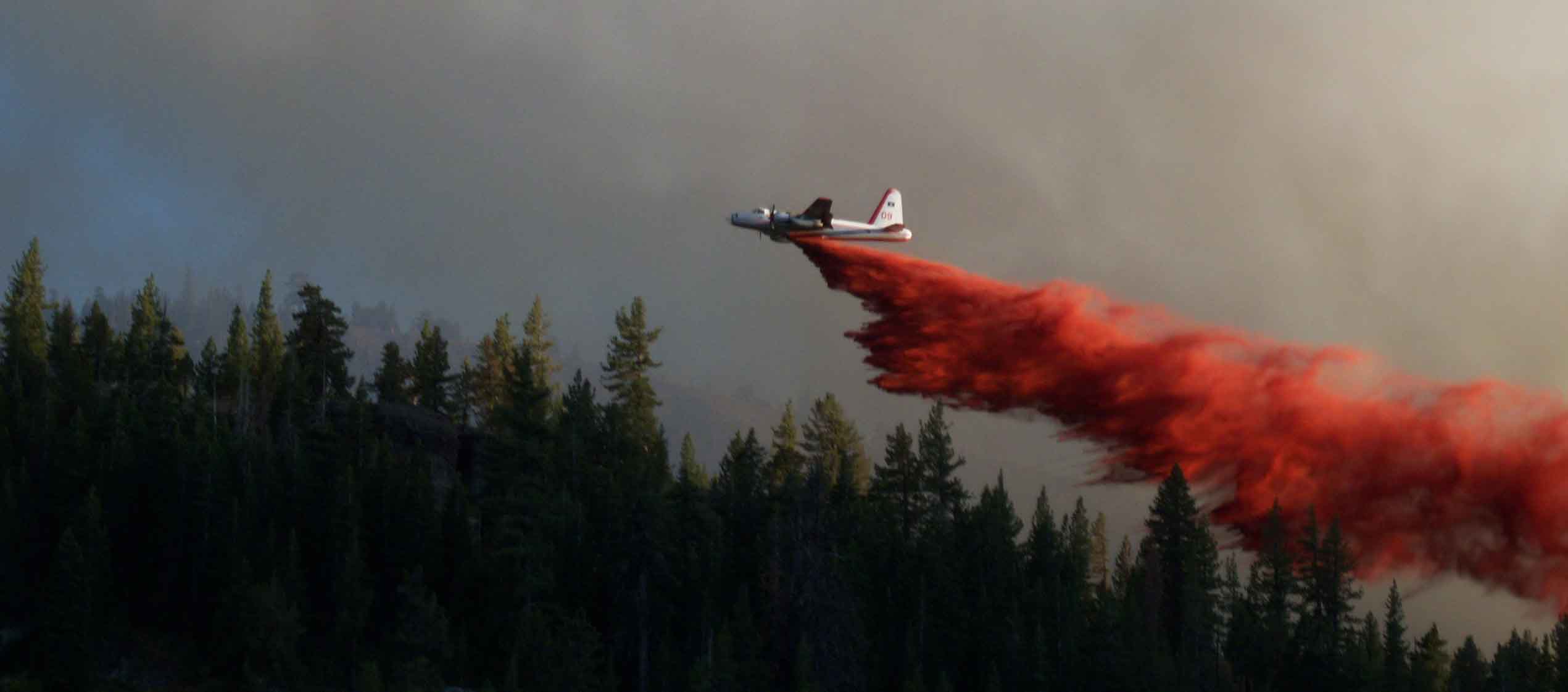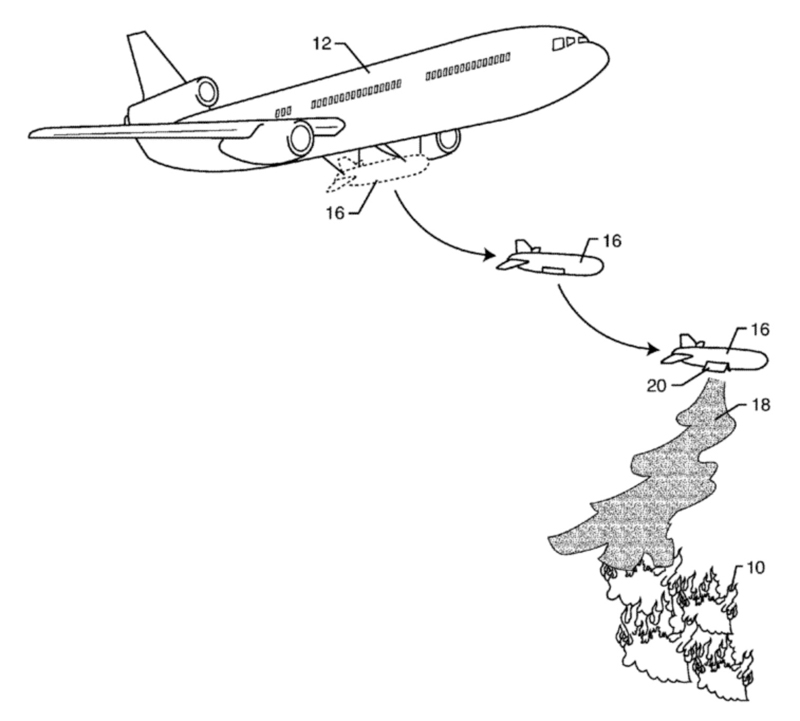
The Osprey, a tilt-rotor, vertical take-off and landing aircraft, is replacing some of the Vietnam era CH-46E Sea Knight and CH-53 Super Stallion helicopters used by the Marine Corps. Since the disastrous wildfires in southern California in 2007, the U.S. Navy and the Marine Corps have had an agreement with Cal Fire making it possible to use their military helicopters on fires if Cal Fire is unable to handle the fires with their own aerial assets.
In July of 2008, CH-46E and CH-53E military helicopters made at least 574 drops on fires in California, delivering 217,000 gallons of water.
At first glance, the Osprey might seem like an excellent firefighting tool. It is fast (cruises at 277 mph), could haul 24-32 firefighters, and could carry 1,800 gallons of water externally. But it has never dropped a gallon of water on a fire and it is possible that it never will due to at least two potential problem areas.
Rotor Wash
As you can see in the photo above, the rotor wash or downdraft from an Osprey is extremely strong–far stronger than a conventional helicopter. Rotor wash from a helicopter can cause, and has caused, serious problems when the wind from the rotors spreads the fire in unexpected directions, sometimes doing more harm than good. Marines even worry that Osprey rotor wash may damage or destroy unrecorded archaeological sites in training areas.
According to a report from the Government Accountability Office, the rotor wash creates enough force to knock sailors and aircraft off a flight deck on a ship.
May CAUSE fires
The Osprey’s engines run extremely hot, so hot that the Navy is taking special precautions to prevent the engine exhaust from melting or buckling the aluminum decks of warships. A report from DARPA states:
The deployment of the MV-22 Osprey has resulted in ship flight deck buckling that has been attributed to the excessive heat impact from engine exhaust plumes… Navy studies have indicated that repeated deck buckling will likely cause deck failure before planned ship life.
DARPA has designed a “flight deck thermal management system” which would liquid-cool the deck from below or above while the aircraft are idling or launching. The military has put out a request for proposals for other permanent deck-cooling systems that could be retro-fitted or designed into new ships still on the drawing board.
Wildfire Today reported on May 30, 2009, that an Osprey made an unscheduled precautionary landing in North Carolina and started a 5-acre fire in a wet marsh. We wrote then:
Marines refueled the Osprey but according to WECT.com, upon taking off it “smashed into swamp mud, nose first”. During that takeoff attempt, heat from the engine exhaust started a vegetation fire which did some damage to the exterior of the aircraft.
A news release from the Marine Corp claims:
The grass fire was quickly extinguished by the crew chief, but caused an undetermined amount of heat damage to the aircraft exterior.
But Emergency Management Director Eddie King said the local fire department had to work through the night to extinguish a 5-acre fire, in an area infested with snakes and alligators, that was caused by the incident.


 We hope you had a good holiday season and are enjoying the first few hours of a new decade. Thanks for visiting the site, and if you are among those who also participate by leaving comments, thanks for that as well.
We hope you had a good holiday season and are enjoying the first few hours of a new decade. Thanks for visiting the site, and if you are among those who also participate by leaving comments, thanks for that as well.



